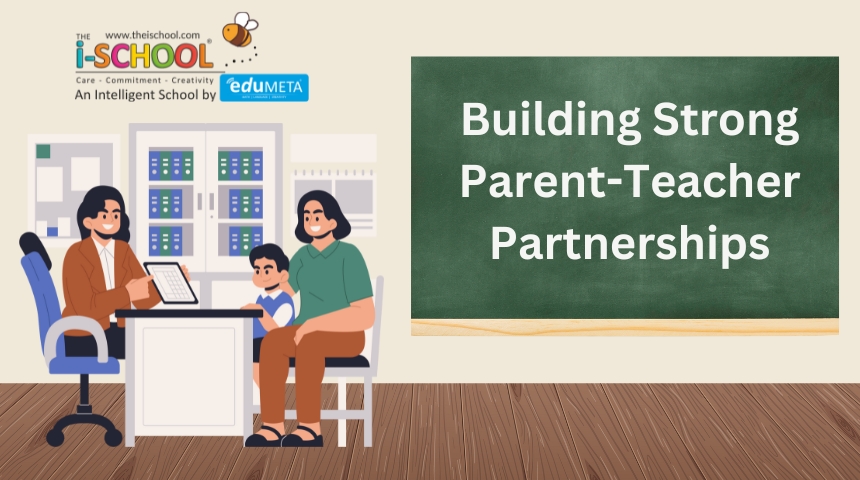Building Strong Parent-Teacher Partnerships

Creating a strong partnership between parents and teachers is essential for a child’s success in preschool. When parents and teachers collaborate effectively, they create a supportive and nurturing environment that fosters the child’s academic, social, and emotional growth. This article explores the importance of building strong parent-teacher partnerships, strategies to establish and maintain these relationships, and the benefits of such collaboration for the child’s development.
Why Building Strong Parent-Teacher Partnerships Matters
Enhanced Communication: Open lines of communication between parents and teachers ensure that both parties are well-informed about the child’s progress, challenges, and needs. This allows for timely interventions and support, creating a consistent and cohesive learning experience.
Consistent Support: When parents and teachers work together, they provide consistent support and guidance, reinforcing the same values, expectations, and learning strategies at home and in school. This consistency helps children feel secure and understood.
Holistic Understanding of the Child: Parents and teachers each have unique insights into the child’s behavior, preferences, and abilities. By sharing observations and information, they can develop a comprehensive understanding of the child, leading to more personalized and effective teaching strategies.
Increased Parental Involvement: Strong partnerships encourage parents to be more involved in their child’s education. Parental involvement is linked to higher academic achievement, better social skills, and improved behavior.
Strategies for Building Strong Parent-Teacher Partnerships
Regular Communication:
- Scheduled Meetings: Organize regular parent-teacher conferences to discuss the child’s progress and address any concerns. These meetings provide an opportunity for in-depth discussions and collaborative planning.
- Informal Updates: Keep parents informed with regular updates through newsletters, emails, or phone calls. Share positive news as well as any areas that need attention.
Collaborative Goal Setting:
- Shared Objectives: Work together to set realistic and achievable goals for the child’s development. Ensure that both parents and teachers understand and agree on these goals.
- Action Plans: Develop action plans that outline specific steps to achieve the goals. Monitor progress regularly and adjust the plans as needed.
Involvement in School Activities:
- Classroom Participation: Invite parents to participate in classroom activities, such as reading sessions, art projects, or field trips. This involvement strengthens the connection between home and school.
- Volunteering Opportunities: Encourage parents to volunteer for school events, fundraisers, and special programs. This not only helps the school but also fosters a sense of community.
Creating a Welcoming Environment:
- Open-Door Policy: Maintain an open-door policy, where parents feel welcome to visit the school and discuss their child’s progress at any time.
- Respect and Empathy: Show respect and empathy towards parents’ perspectives and concerns. Acknowledge their efforts and contributions to their child’s education.
Effective Use of Technology:
- Parent Portals: Utilize online parent portals where parents can access their child’s academic records, attendance, and school announcements.
- Communication Apps: Use communication apps that allow for instant messaging and updates, making it easier for parents to stay informed and engaged.
Benefits of Strong Parent-Teacher Partnerships
Improved Academic Performance: Children perform better academically when their parents are actively involved in their education. They are more likely to complete homework, attend school regularly, and have a positive attitude towards learning.
Enhanced Social and Emotional Development: Strong parent-teacher partnerships contribute to a child’s social and emotional well-being. Children feel more secure and confident when they see their parents and teachers working together.
Early Identification and Intervention: Close collaboration between parents and teachers allows for early identification of any learning or behavioral issues. Early intervention can address these challenges before they become more significant problems.
Positive School Experience: Children are more likely to enjoy school and feel motivated to learn when there is a positive and supportive relationship between their parents and teachers.
Conclusion
Building strong parent-teacher partnerships is crucial for a child’s success in preschool and beyond. Through regular communication, collaborative goal setting, parental involvement, and creating a welcoming environment, parents and teachers can work together to provide the best possible support for the child’s development. The benefits of such partnerships are far-reaching, contributing to improved academic performance, enhanced social and emotional development, and a positive school experience. By prioritizing these relationships, we can create a nurturing and empowering environment that fosters a love for learning and sets the foundation for lifelong success.
